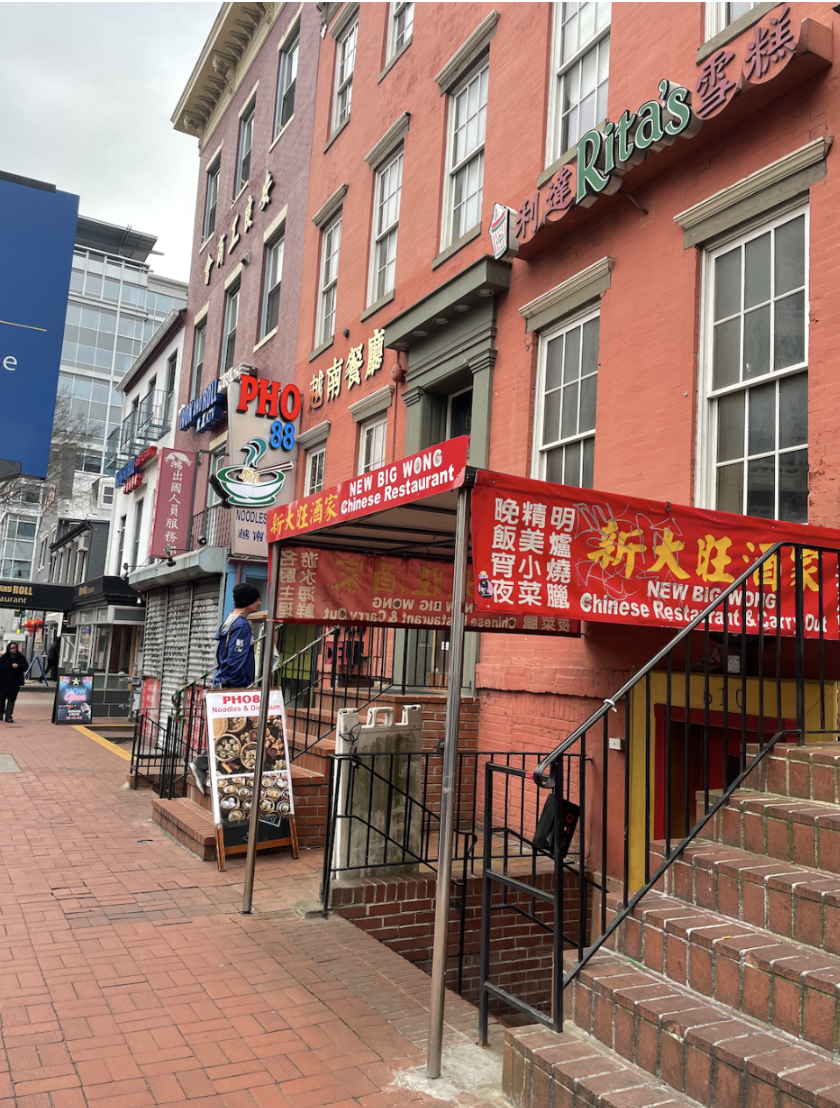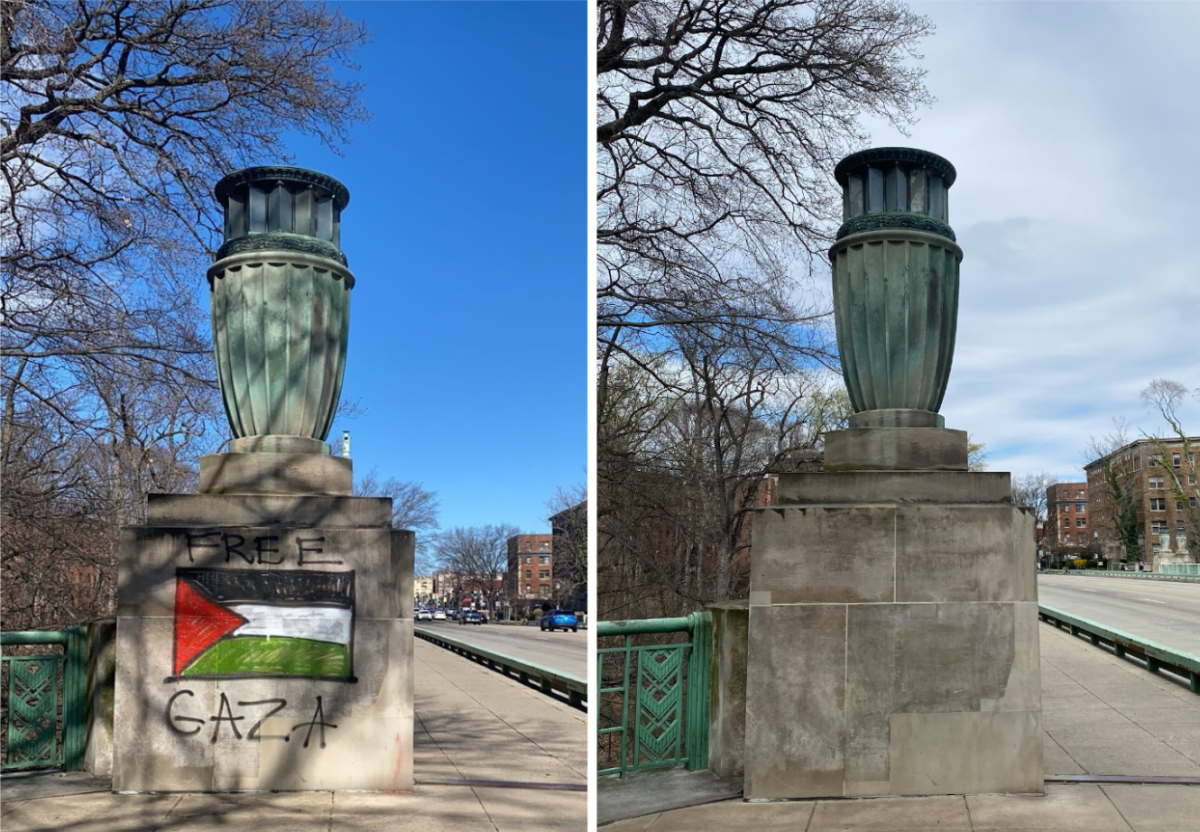Popular restaurants’ storefronts are adorned with Chinese characters. The smells of dim sum, peking duck and fragrant herbs waft through the neighborhood. Large crowds step out of the Gallery Place-Chinatown metro station, rushing to see a basketball game.
D.C.’s Chinatown has been a popular hub for Chinese culture since its establishment in the late 19th century. Located between Fifth and Seventh St. in downtown D.C., the neighborhood is marked by Chinese restaurants, stores for Chinese art and cultural pieces and the famous Friendship Archway. However, recent increases in rent prices and the rise of gentrification have contributed to a decline in the number of Chinese establishments in Chinatown.
Chinatown was created in the 1880s, thirty years after the first Chinese migrants came to D.C. Upon arriving in D.C., Chinese immigrants opened restaurants, pharmacies and stores in the South Pennsylvania Avenue area, before moving to Chinatown’s present-day location between Fifth and Seventh St. in 1931.
The D.C. Chinese community flourished in Chinatown, as the region grew in popularity among D.C. residents. However, the Chinese population in Chinatown began to decline over time.
The 1968 D.C. riots over Martin Luther King Jr.’s death heavily impacted the community through the destruction of Chinese businesses, causing the first wave of migration of Chinese residents to Fairfax County and the Montgomery County suburbs.
In 1997, the construction of a new sports and music venue, now known as the Capitol One Arena, dramatically increased property values in the area. Many Chinese businesses were forced to close down as they couldn’t afford high rent prices, creating another wave of migration to D.C. suburbs.
The legacy of this migration can still be seen in Chinatown today. The Asian-American population in D.C. Chinatown has gone from 66% in 1990 to 21% in 2010, demonstrating a substantial decline. According to estimates by The Washington Post, there are only 300 Chinese residents left in Chinatown.
Currently, the rise of gentrification has led several popular chain restaurants like Subway and Chipotle to replace Chinese businesses. Rather than being a Chinese cultural enclave, Chinatown now resembles many other parts of D.C., with a greater emphasis on entertainment and eating popular foods than taking part in Chinese culture.
Richard Chiang, the owner of a Chinese grocery store called Da Hsin Trading Company, is among many small business owners who have struggled with the impacts of gentrification and rising rent prices. Da Hsin opened in Chinatown over 26 years ago and is known for selling Chinese herbs, teas and cultural items.
Da Hsin’s mission is to provide the neighborhood with “unique oriental goods where surrounding areas [do] not,” which has become increasingly difficult with the impacts of gentrification. “We’re struggling with all of the above,” Chiang said. “It’s hard to do anything with every [price] so high.”
Furthermore, D.C. Chinatown is among many Chinatowns across the country that were impacted by the rise of anti-Asian sentiment, which was fueled by rhetoric associating Asian Americans with the spread of COVID-19. According to a study by the Center for the Study of Hate and Extremism, hate crimes toward Asian Americans increased by 339% in 2021. D.C. is among many US cities where anti-Asian hate increased significantly.
In an effort to curb the rise of anti-Asian hate, the D.C. Mayor’s Office on Asian and Pacific Islander Affairs launched the “Hate Stops With US” campaign at the start of Asian American and Pacific Islander Heritage Month in May 2022. The goal of the campaign is to raise awareness of the issues Asian Americans are experiencing in the D.C. community through increased education in D.C. public schools and community engagement.
Posters sporting the slogan #HateStopsWithUS can be found across Chinatown, emphasizing the importance of taking a stance against discrimination. Chinese businesses continue to grapple with the impacts of Westernization and anti-Asian hate, making efforts to preserve ethnic enclaves like Chinatown increasingly difficult.
By Eliana Aemro Selassie

































































